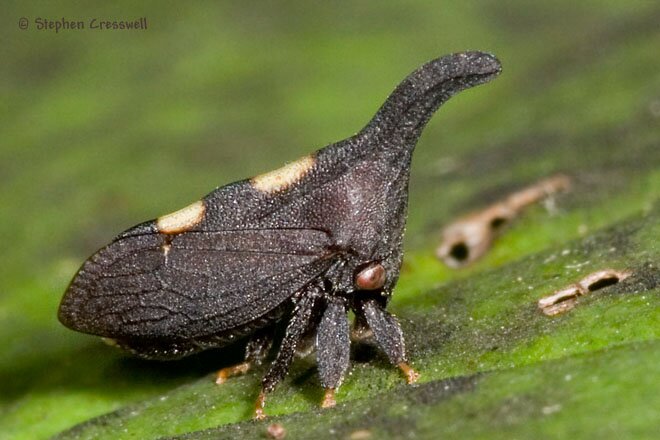
Family:Membracidae
Subfamily: Membracinae
Length: typically 5 mm
Two yellowish dorsal spots give this species its common and scientific names. Its surfaces feature fine, dense punctations. The brown to reddish-brown eyes are prominent, as are the cells of the forewings. The first two pairs of legs are broad and flattened, while the back pair is thinner and spined. The tarsi are thinner than the other leg sections.
This species flies readily and is regularly found on plants that are not its true host. Host plants for Enchenopa binotata include Redbud, Black Locust, Black Walnut, American Bittersweet, Common Hoptree, and Nannyberry, all of which live in West Virginia.
A 1912 researcher reported that instars one through five lasted 7, 5, 5, 14, and 7 days respectively, and that there was one generation per year.
Left: A face to remember, that of the Two-Marked Treehopper.
Also on this website is a photograph of a late instar nymph of Enchenopa binotata, as well as drawings of all five instars.



